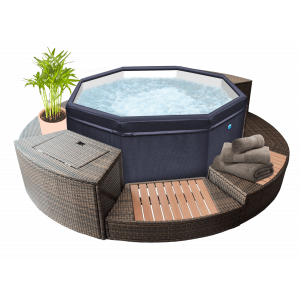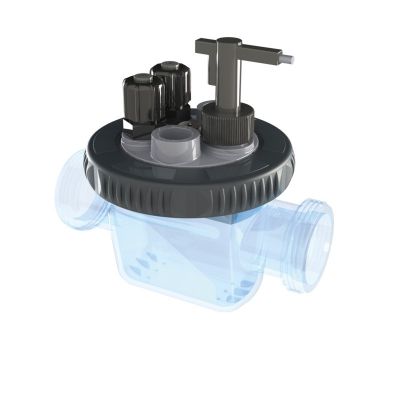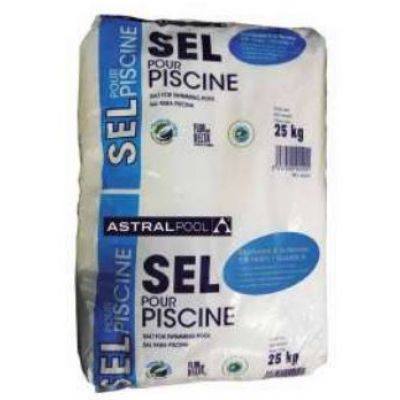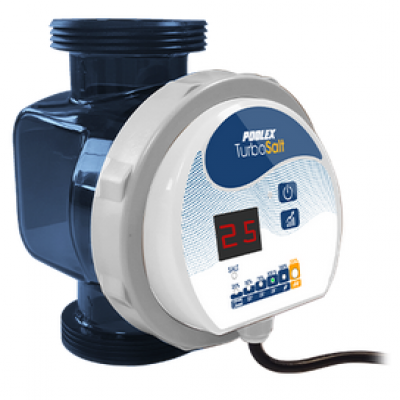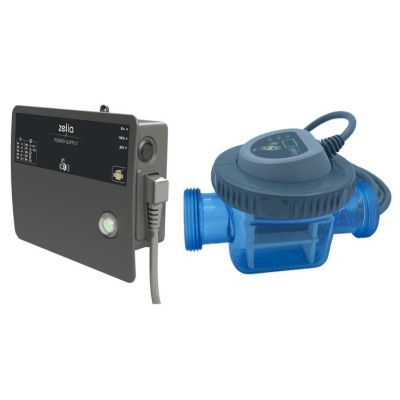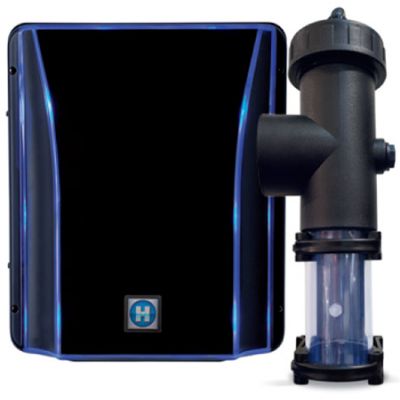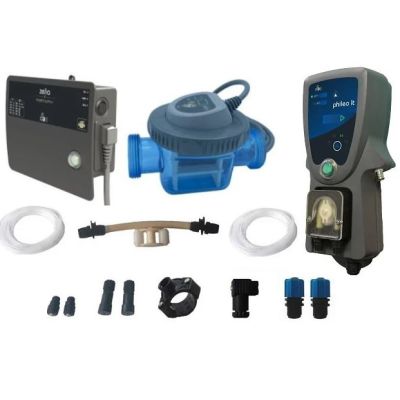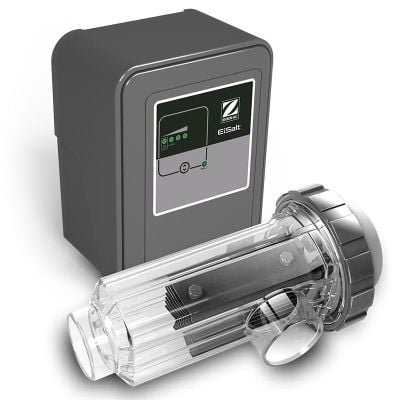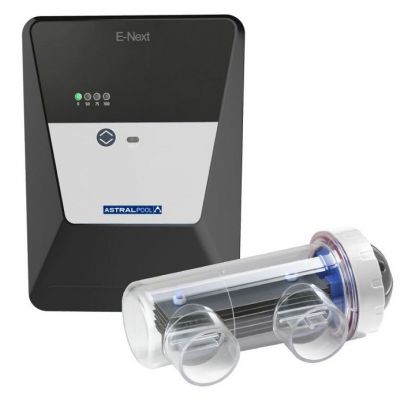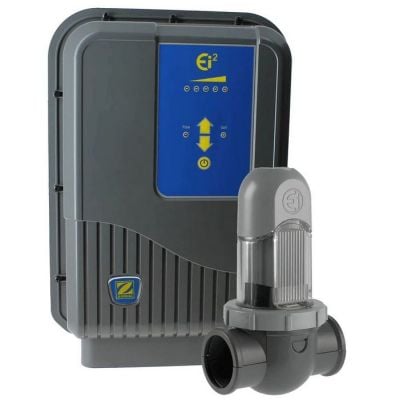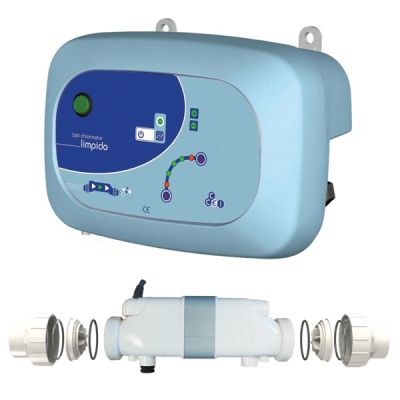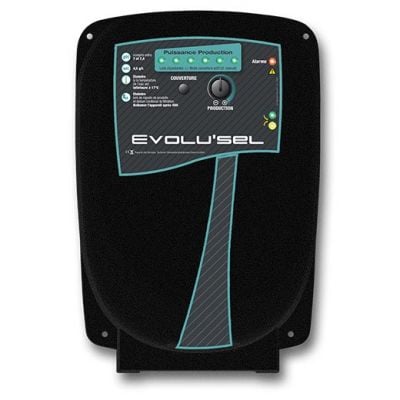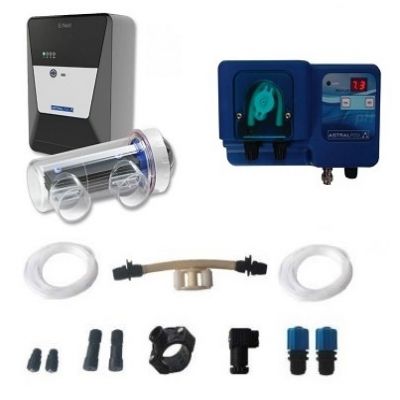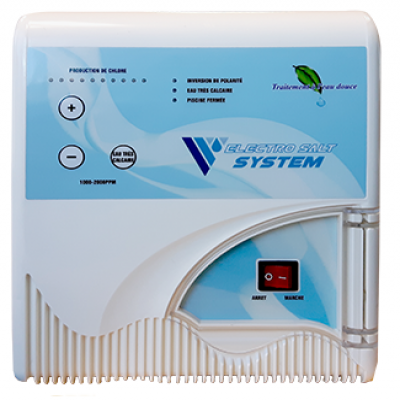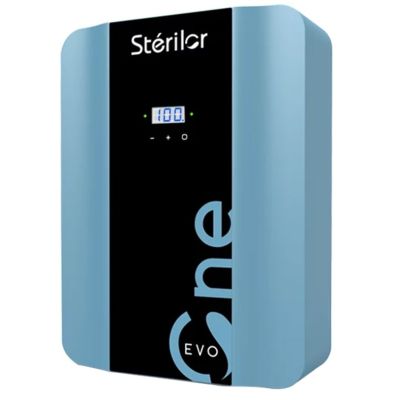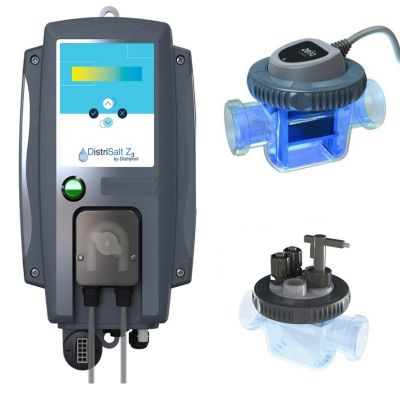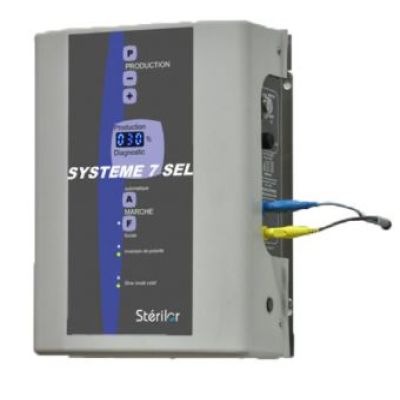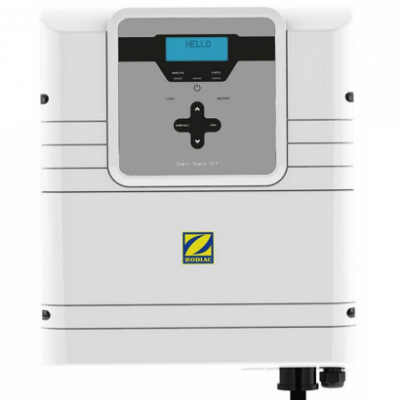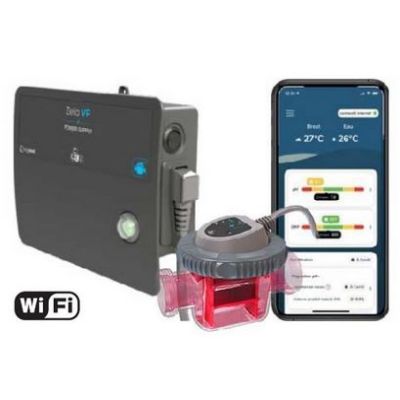Électrolyseur piscine : Zodiac, CCEI, Astralpool
27 products
Do you want to disinfect your swimming pool water by limiting chemicals? distripool invites you to discover the electrolyser: this device will prove ideal for cleaning and disinfecting your pool. How does the pool electrolyzer work? The operation of this device is very simple. Simply add sea salt to your pool water: the electrolyzer will take care of the rest. When water passes through the device, the salt is transformed into chlorine, which helps disinfect your pool.
Filter (27 products)
Poolex Turbo Salt salt electrolyser
ZELIA swimming pool electrolyser - CCEI
SEL CLEAR swimming pool electrolyser
Hayward Salt & Swim 2.0 pool electrolyser
SALTBOX swimming pool electrolyser + Electrical box
Zodiac GenSalt OE swimming pool electrolyser
Electrolyzer + PH regulation ZELIA DUO
EiSalt ZODIAC salt electrolyzer
E-NEXT Astrapool swimming pool electrolyzer
EI Zodiac salt electrolyser
Clear Connect EVO swimming pool electrolyser
Limpido swimming pool electrolyser at CCEI
Electrolyzer + PH E-NEXT DUO regulation
ELECTRO SALT SYSTEM swimming pool electrolyser: 1 gr/L
OE electrolyser pack + Perfect PH regulator
Stérilor EVO ONE swimming pool electrolyzer (Old SYSTEM 7)
GenSalt OT pool electrolyser by Zodiac
Connected swimming pool electrolyser: ZELIA VP
The principle of the swimming pool electrolyser
The pool water is slightly salty (7 to 10 times less than sea water) and passes through an electrolysis cell, after filtration, just before returning to the pool. In the electrolysis cell, the salt is converted into sodium hypochlorite, a disinfectant substance which kills the
biomass present in the water (bacteria, algae and fungi); unstable, it returns to salt after having carried out its disinfection work. This element also has the advantage of oxidizing the organic residues of disinfection and the “contributions” of
bathers (skin, hair, sweat, etc.).
The advantages of salt electrolysis
Salt electrolysis has many advantages. First of all, you won't have to use chemicals, which is both environmentally friendly and good for the health and well-being of your family. Unlike traditional chlorine, salt does not irritate the skin and eyes. In addition, even if it is an investment at the start, it will quickly pay off. The only thing you need to watch out for: the variation in PH.
Discover the selection of swimming pool electrolyzers from Distripool: high-performance devices for maintaining your pool.In addition, it is no longer necessary to carry out shock chlorinations. There is no longer any stock of products to manage. Installation takes a maximum of a few hours on any swimming pool under construction or built for
several years, regardless of the type of filtration.
How to calibrate your electrolyser? :
The volume of the pool is not the only parameter to take into account
account when selecting your salt treatment. The pH level, the rate
of stabilizer, sunshine and attendance are
so many factors to take into account in your choice.
Here is a table summarizing the different factors and their effect on
the actual volume of the pool. This table should help you correctly
size your electrolyzer. Afterwards without going into details
techniques, you will have understood, it is in your interest to
oversize your salt electrolyzer:
The safety of salt treatments
The electrodes are calculated for a lifespan of 5 to 10 seasons in our latitudes. In the event of no water flow, the majority of devices on the market are equipped with an automatic safety cut-off system (either by flow meter or by SEC presence of water contact). For most electrolysers, you can also connect them to the filtration programming: the electrolyzer will only operate when the filtration pump is running.
Advice for optimal maintenance of the swimming pool electrolyser
Maintaining the adequate salt level.
It is essential that the salt concentration remains between 2 and 5g/l. Be sure to follow the manufacturer's recommendations regarding the amount of salt in the water: too much can cause electrode corrosion while too little will overload and damage the cell prematurely. Check and adjust the salt content frequently, as it may decrease over time due to chemical reactions, precipitation or draining. Avoid the use of active oxygen treatments, as they are incompatible with salt electrolysis. In addition, it is necessary to avoid the use of borehole water, often rich in metals such as iron, manganese and copper, which are harmful to the cell.
Inspecting shutter status.
When the shutter is closed, it can increase the chlorine concentration, making the water more corrosive and potentially damaging equipment. Reduce electrolysis production (between 40 and 90%) when the shutter is closed. Some electrolysers have a cover or shutter function. This allows the electrolyser to be connected to the shutter box in order to automatically lower this production.
Water temperature monitoring.
Turn off the electrolyser if the water temperature drops below 15°C to avoid unnecessary stress on the device.
Please note that some electrolyser models have a winterizing function which stops the device automatically.
.
Cleaning cells.
Choose a self-cleaning cell thanks to polarity inversion (with a default setting every 4 hours), this will make it easier to maintain the equipment. If the cell is too dirty, cleaning in a slightly acidic solution may be necessary. A volume of acid to 10 of water.
Water flow control.
Inefficient water renewal can increase the concentration of chlorine and gases. In the same way, too low a flow rate can damage the electrodes or even cause the cell to explode. If you wish, the electrolysers can be supplied with a flow detector: this is an option that can prove very useful!
PH regulation.
You should know that technology based on salt electrolysis can naturally raise the pH of the water. You must therefore ensure that the pH is between 7.0 and 7.6 in order to benefit from optimal chlorine effectiveness! It is advisable to couple an electrolyser to anPH regulatorautomatic. In fact, salt treatment tends to disrupt the PH more quickly.
The interest of a land pool.
This device is very useful for reducing residual parasitic currents which can oxidize metallic elements and distort pH or chlorine readings if they are too present. You can find ourland pool here .
Self-cleaning (or polarity reversal)
It all depends on the hardness of the water in your pool (water hardness tests available in DIY stores, or through water service of your city.
T.H. less than 25° = soft water (low limescale)
T.H. greater than 30° = hard water (limestone)
T.H. supérieur à 40° = eau très dure (très calcaire)
The water is hard (hard or very hard): the electrolysis cell will scale quickly. Choose a self-cleaning electrolyser. this system will reverse the anode - cathode functions (polarities) of the electrolysis cell and remove limescale deposits without intervention on your part. To facilitate cleaning, these electrolysis cells are made up of plate electrodes. full.
How to install your salt treatment:
Automatic regulation of PH and electrolysis:
Regulating your pH automatically will allow you to slow down
the scaling of your electrolyzer cell, and above all the pH has a
direct influence on the effectiveness of the chemical treatment of your water,
whether for sodium hypochlorite produced by electrolysis, or
any conventional chlorine treatment.
See Also
The Cookies
With cookies, enjoy a better experience on our site. We use them for statistical, analysis or advertising purposes.
Find out moreAnalytical cookies| ||2009
Ces cookies nous permettent de faire de l'analyse statistique et améliorer notre site. Pour les accepter, veuillez cocher la case.
Cookies marketing
These cookies allow us to offer you an ever more optimized experience with the help of our partners.
Essential cookies
These cookies are necessary for the operation of the site for your purchasing experience and your customer account. You cannot refuse them.


